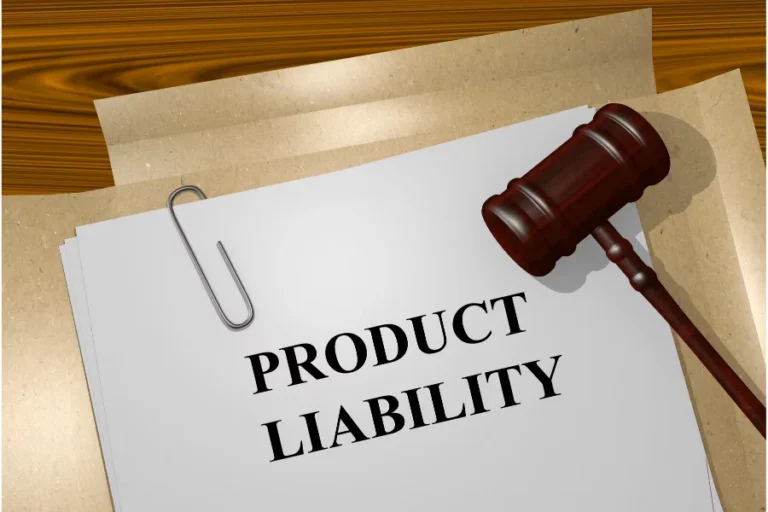Product liability claims arise when a defective product causes harm or injury to a consumer. Whether it’s a malfunctioning electronic device, a contaminated food item, or a hazardous toy, manufacturers, distributors, and retailers can be held legally responsible for damages resulting from their products’ defects.
Filing a product liability claim can be a complex and challenging process, but understanding the steps involved and finding trusted product liability lawyers to represent you can help you navigate the legal system and seek compensation for your injuries. In this comprehensive guide, we’ll explore the essential steps to filing a product liability claim and protecting your rights as a consumer.
Step 1: Document the Incident and Gather Evidence
The first step in filing a product liability claim is to document the incident and gather evidence to support your case. Take photos or videos of the defective product, any injuries sustained, and the circumstances surrounding the incident. Preserve any physical evidence, such as the product itself, packaging, instruction manuals, and receipts, as these may be crucial in establishing liability and proving your claim.
Step 2: Seek Medical Attention
If you’ve been injured as a result of a defective product, seek medical attention immediately. Your health and well-being should always be the top priority. Document your injuries, medical treatments, and expenses, as this information will be essential in calculating the damages you’re entitled to recover in your product liability claim.
Step 3: Identify Potentially Liable Parties
Identify all potentially liable parties involved in the manufacturing, distribution, and sale of the defective product. This may include the product manufacturer, distributor, retailer, and any other entities involved in the product’s supply chain. Determining the responsible parties is crucial for holding them accountable and seeking compensation for your injuries.
Step 4: Consult with a Product Liability Attorney
Consult with a qualified product liability attorney to assess the strength of your case and explore your legal options. An experienced attorney can provide invaluable guidance, advocate on your behalf, and navigate the complexities of product liability law. They can also help you understand your rights, evaluate potential damages, and determine the best course of action for pursuing your claim.
Step 5: Determine the Legal Basis for Your Claim
Product liability claims typically fall under one of three legal theories: negligence, strict liability, or breach of warranty. Your attorney will help you determine the most appropriate legal basis for your claim based on the circumstances of your case. In a negligence-based claim, you must prove that the defendant breached their duty of care by failing to prevent the defect or warn consumers about its dangers.
Strict liability claims hold manufacturers and sellers liable for defects in their products, regardless of fault or negligence. Breach of warranty claims arises when a product fails to meet the terms of an express or implied warranty.
Step 6: File a Complaint or Lawsuit
If a settlement cannot be reached through negotiation or mediation, your attorney may file a complaint or lawsuit in civil court on your behalf. The complaint outlines the facts of the case, the legal basis for the claim, and the damages sought. The defendant(s) will then have an opportunity to respond to the allegations and present their defence.
Step 7: Discovery Phase
During the discovery phase of the litigation process, both parties exchange information, evidence, and witness testimony relevant to the case. This may include depositions, interrogatories, requests for documents, and expert witness testimony. Your attorney will work diligently to gather evidence, interview witnesses, and build a strong case to support your product liability claim.
Step 8: Negotiation and Settlement
Many product liability claims are resolved through negotiation and settlement outside of court. Your attorney will engage in negotiations with the defendant(s) or their insurance representatives to reach a fair and equitable settlement agreement. Settlement offers may include compensation for medical expenses, lost wages, pain and suffering, and other damages resulting from the defective product.
Step 9: Trial, Verdict, and Appeal
If a settlement cannot be reached, your case may proceed to trial, where a judge or jury will hear evidence, arguments, and testimony from both parties. After deliberation, the court will render a verdict determining liability and awarding damages, if applicable. Either party may have the right to appeal the verdict if they believe legal errors occurred during the trial process.
Step 10: Receive Compensation and Closure
If your product liability claim is successful, you will receive compensation for your injuries and losses as determined by the court or through settlement. This may include reimbursement for medical expenses, lost income, pain and suffering, and other damages resulting from the defective product. Once your claim is resolved, you can focus on your recovery and move forward with confidence, knowing that justice has been served.
Conclusion
Filing a product liability claim requires careful planning, documentation, and legal expertise to navigate the complexities of the legal system successfully. By following these essential steps and seeking guidance from a qualified product liability attorney, you can protect your rights as a consumer and seek compensation for injuries caused by defective products. Remember that you’re not alone in this process—legal professionals are here to advocate for you and ensure that justice is served. So don’t hesitate to assert your rights and hold negligent manufacturers and sellers accountable for the harm they’ve caused.

